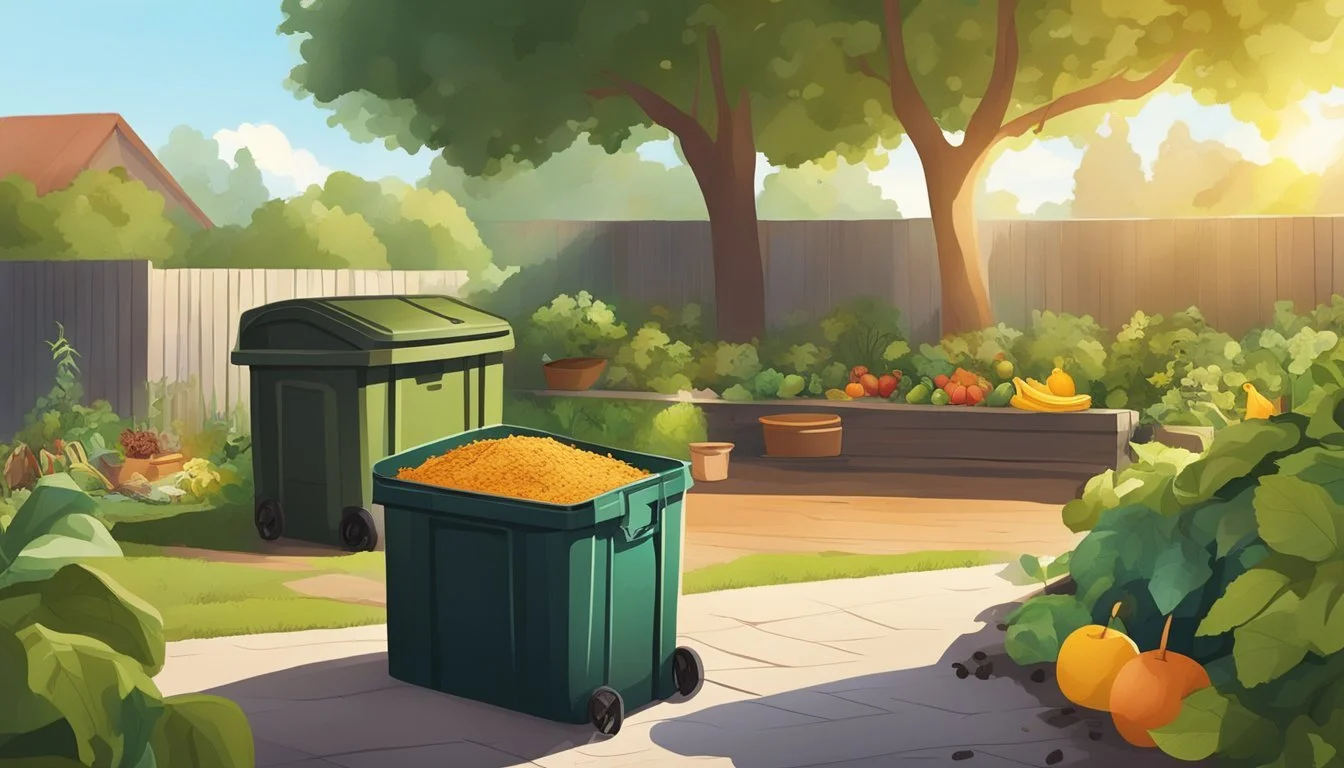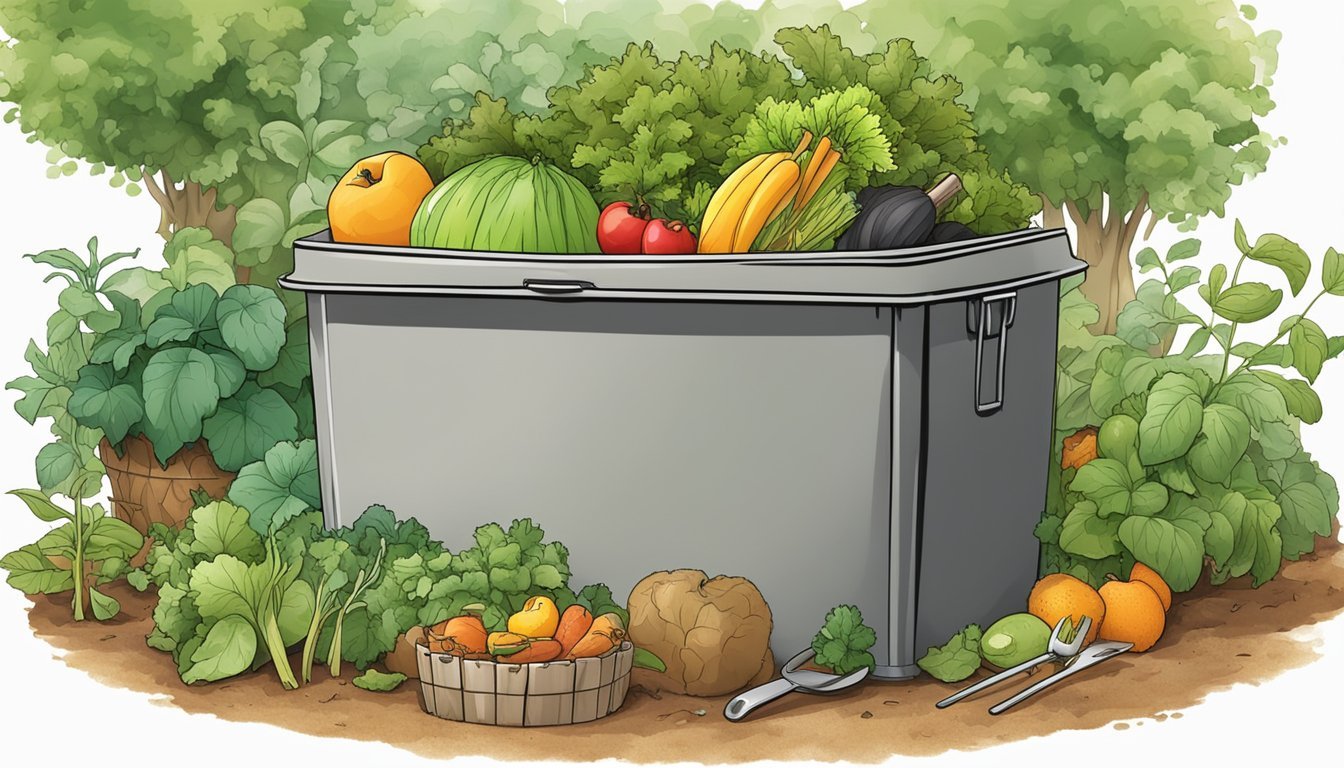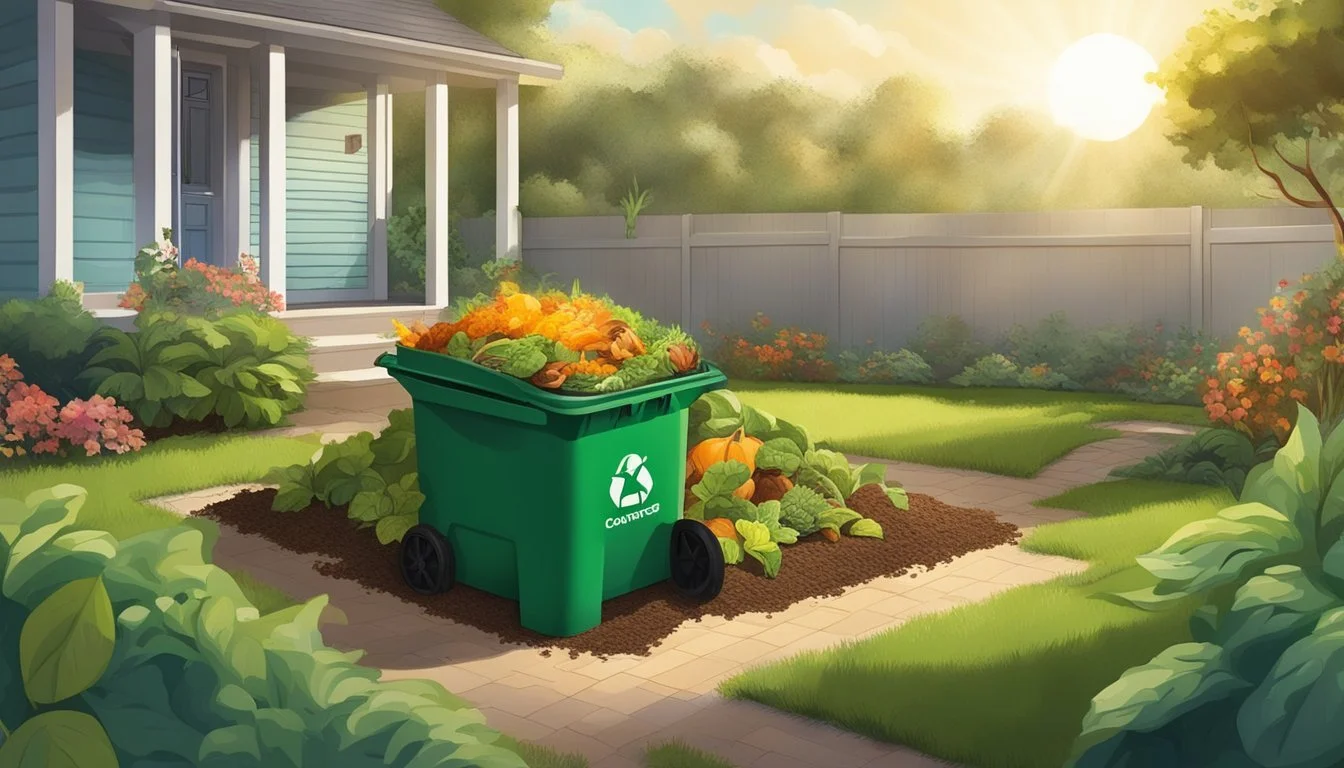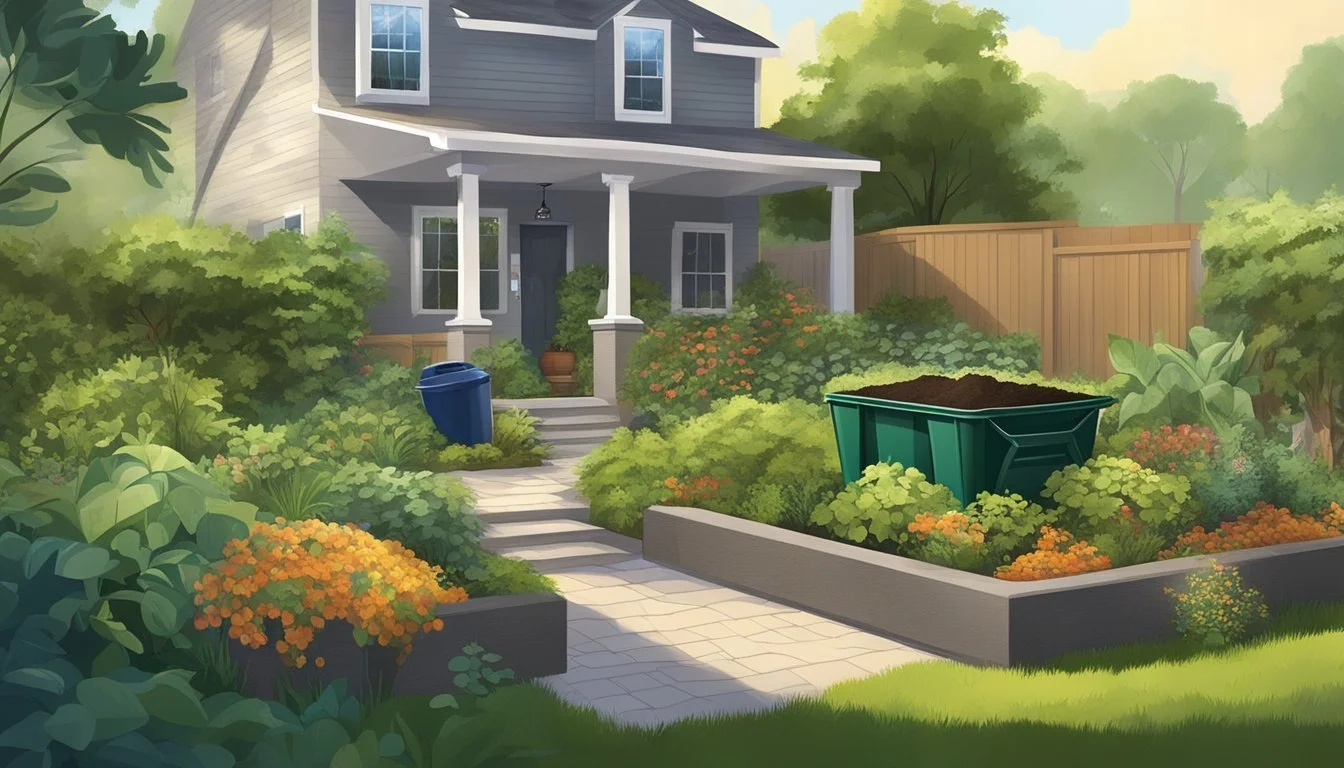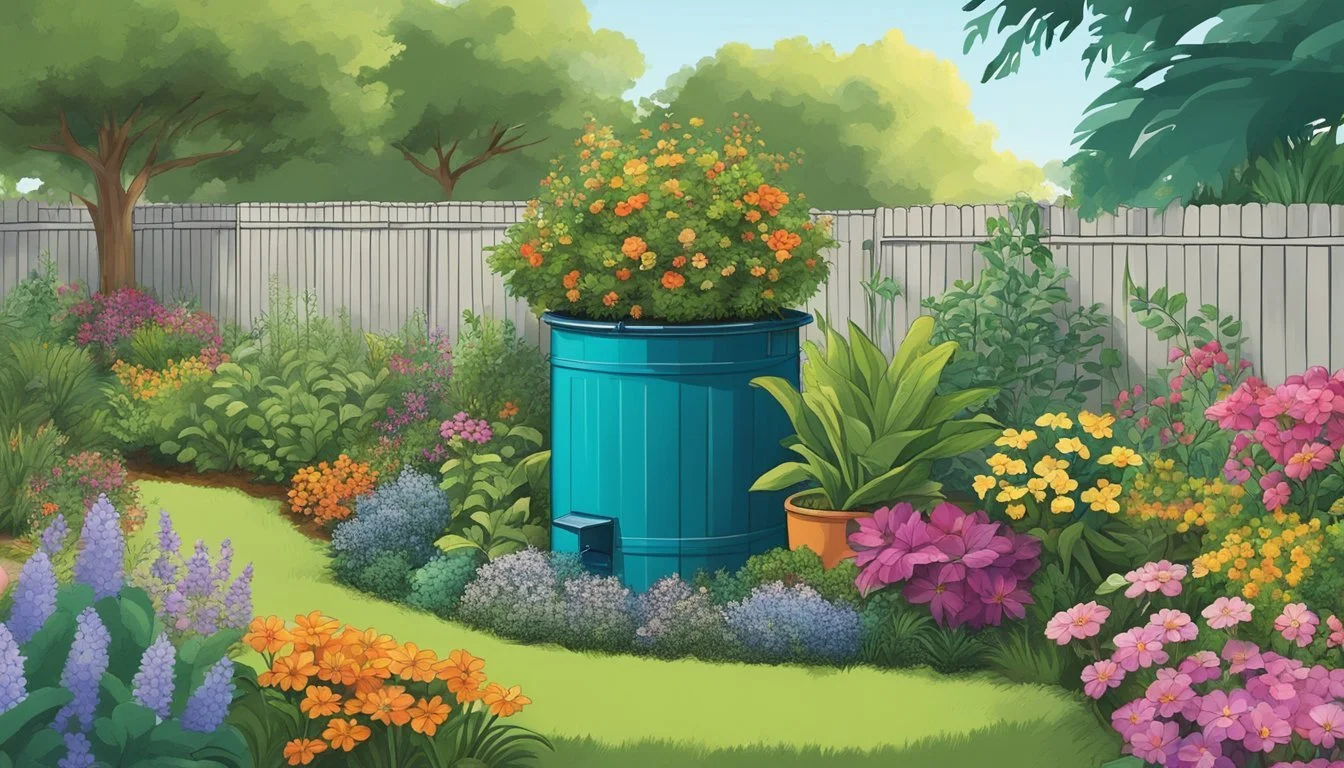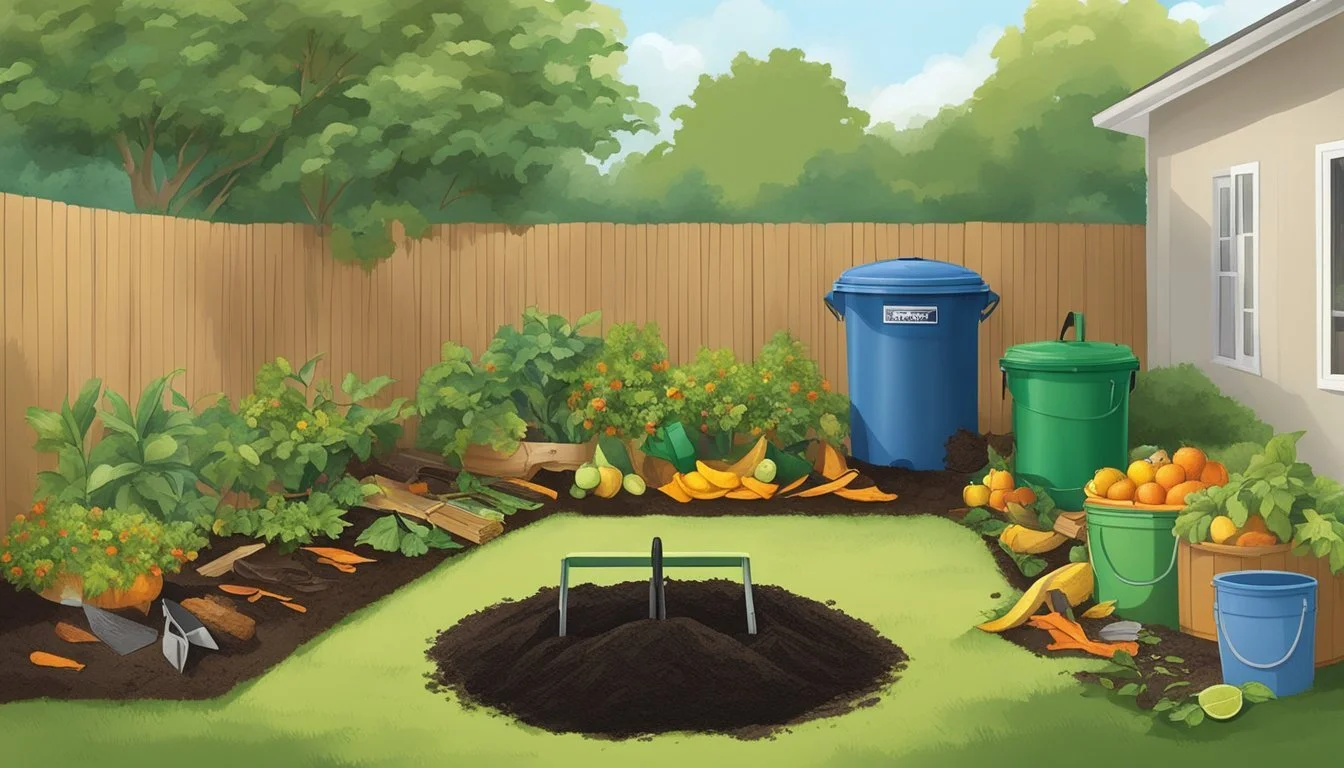Guide to Composting in Lakeland, FL
Essential Tips for Local Gardeners
Composting is a practical and environmentally friendly process for managing organic waste in Lakeland, Florida. It involves the natural breakdown of organic material such as leaves, kitchen scraps, and yard trimmings, which transforms into a nutrient-rich soil amendment known as compost. This process not only enriches the soil, promoting healthier plant growth, but it also reduces the amount of waste sent to landfills, thereby cutting down on methane emissions and lowering one's carbon footprint.
The city of Lakeland encourages residents to participate in composting by providing information and resources to make it accessible and straightforward. By composting, individuals contribute positively to their community by minimizing waste and supporting sustainable practices. Whether one lives in a single-family home with ample backyard space or resides in an apartment, there are composting methods available to suit different living arrangements and lifestyles.
Understanding the basics of composting in Lakeland, such as what materials are compostable and how to maintain a compost pile or bin, is crucial for success. The city provides guidelines on how to effectively compost, ensuring that organic waste is converted into valuable compost that can be used to enhance gardens, flower beds, and landscaping throughout the area.
Composting Basics
Composting is a practical and environmentally friendly process that offers significant benefits for soil health and waste reduction. Here, we'll explore the essentials of composting, providing residents of Lakeland, FL with a straightforward guide to transforming organic waste into valuable soil amendments.
What Is Composting?
Composting is the natural process of recycling organic material, such as leaves, vegetable scraps, and yard trimmings, into compost. This rich, earthy substance is produced by the decomposition of organic matter, facilitated by microorganisms, insects, and worms in the presence of oxygen. Compost acts as a nutrient-rich soil conditioner, boosting soil structure, fertility, and moisture retention.
Benefits of Composting
Composting offers multiple benefits for the environment and soil:
Reduces Waste: By diverting organic materials from landfills, composting decreases methane emissions, a potent greenhouse gas, and conserves landfill space.
Enhances Soil: Compost improves soil quality, providing a balanced mix of essential nutrients, and can remediate soils that are contaminated, compacted, or otherwise sub-optimal.
Enriches Gardens: Regular application of compost encourages strong plant growth, reducing the need for chemical fertilizers.
Promotes Sustainability: It turns household and yard waste into a resource, closing the loop on the food cycle and promoting sustainability.
Materials for Composting
Successful composting requires a balance of materials, commonly known as "greens" for nitrogen and "browns" for carbon. Understanding what to include and what to avoid is crucial for a healthy compost process.
Green Materials
Greens are rich in nitrogen, and they help to break down organic matter quickly. In Lakeland, residents can use:
Fruit and vegetable scraps (excluding citrus peels which can be too acidic)
Grass clippings and yard waste, which should be mixed in with browns to avoid clumping
Coffee grounds, which can be directly sprinkled into the compost
Fresh leaves, but be mindful as they can also classify as browns when dried
Brown Materials
Browns provide carbon, which fuels the composting organisms. They also create air pockets in the compost to keep it from becoming too dense and smelly. Some effective browns are:
Cardboard and paper (shredded to speed up decomposition)
Sawdust, which should be scatter thinly to prevent matting
Dry leaves, which are a staple in most compost piles
Other woody yard waste, chopped or shredded for faster breakdown
Materials to Avoid
Not everything belongs in a compost pile, as some materials can attract pests or cause the pile to smell. Certain items also pose health risks by introducing pathogens or heavy metals into the compost. They should make sure to exclude:
Meat, dairy, and bones as they can attract rodents and cause foul odors
Diseased plants, which can spread pathogens to the compost and into the garden
Treated wood products or colored paper, which may contain harmful chemicals
Incorporating the correct balance of green and brown materials while avoiding contaminants will ensure that Lakeland residents have fertile compost for their gardens.
Setting Up Your Compost Bin
When starting a compost bin, the key factors are identifying a suitable location and choosing the right type of bin. These initial steps ensure the compost process is efficient and manageable.
Choosing a Location
One should select a location in their backyard that is flat and well-drained to avoid water pooling. It's important that the site receives a balance of sun and shade—sun for warmth, which aids decomposition, and shade to prevent the compost from drying out. Accessibility is also crucial; the bin should be convenient to access year-round for adding materials and retrieving compost. Adequate airflow is essential for effective composting; thus, the location should not be overly enclosed.
Selecting the Right Bin
Several options are available for compost bins, contingent on one's composting needs and backyard space. Closed bins are suitable for small spaces and help deter pests, while open bins work well for larger yards. Tumblers can be beneficial for those who want to speed up the composting process through more frequent turning. The compost bin should have proper aeration designed into it to promote airflow, and it must be able to retain moisture, as moisture is a critical element in the composting process. When choosing a bin, also consider the ease of adding materials and harvesting compost.
Building a Compost Pile
Constructing a compost pile is a straightforward process that involves balancing carbon and nitrogen materials to create a nutrient-rich product. Here’s how one can layer the materials and maintain the compost pile for optimal decomposition.
Layering Your Compost
One starts layering their compost by alternating green and brown materials to balance nitrogen and carbon. Greens are nitrogen-rich and include fruit and vegetable scraps, coffee grounds, and grass clippings. Browns contribute carbon and are materials like leaves, straw, and shredded paper. A successful compost pile typically has a carbon to nitrogen ratio of about 30:1. For layering:
Green Layer (Nitrogen): 1 part green materials
Brown Layer (Carbon): 2 parts brown materials
Maintaining Moisture and Aeration
Moisture and aeration are critical to the composting process as they support microbial activity necessary for decomposition. The compost pile should be moist like a wrung-out sponge; one can add water if it’s too dry or brown materials if it’s too wet. A pile with the correct moisture level will be free of foul odors and will decompose more efficiently. Aeration can be achieved by turning the pile every week or so to introduce oxygen, which aids in breaking down organic material.
Composting Methods
In Lakeland, Florida, individuals can choose from several effective composting methods suited to their preferences and the resources available to them. Specifically, Lakeland residents may consider backyard composting for a traditional approach or worm composting as a more specialized technique.
Backyard Composting
Backyard composting involves creating a compost pile or bin where organic material decomposes over time. Residents should find a dry, shady spot and alternate layers of 'browns,' such as leaves and twigs, with 'greens' like food scraps. These materials should be mixed occasionally, and water should be added to keep the pile moist, which facilitates the decomposing process. Backyard composting can be performed in various bins that cater to different volumes and types of waste, from low maintenance to more active approaches that yield compost more quickly.
Worm Composting
Also known as vermiculture, worm composting is a method that utilizes the natural digestion processes of worms to break down organic material. Red wigglers are the most common worms used in these systems. Residents can house these worms in a bin with bedding created from moistened newspaper or cardboard. Worm composting efficiently converts kitchen scraps and vegetable peels into rich compost, known as worm castings. It's an ideal solution for smaller spaces or indoor composting and requires some manure to kickstart the process.
Optimizing the Process
To create nutrient-rich compost efficiently, it’s essential to fine-tune the balance of materials and encourage robust microbial activity. The right mix of ingredients and aeration techniques will expedite the transformation of waste into compost.
Balancing Greens and Browns
The composting process thrives on a balance of nitrogen-rich "greens" and carbon-rich "browns." Greens include materials like fruit and vegetable scraps, coffee grounds, and grass clippings. They add nitrogen, a key component for microbial growth. Browns, on the other hand, are items such as dry leaves, paper, cardboard, and twigs, providing the carbon that absorbs excess moisture and fosters air flow.
A general guideline is to use a ratio of 1 part greens to 3 parts browns, although this can vary depending on the specific materials used.
Turning and Aerating the Compost
Regular turning of the compost pile introduces oxygen, which is critical for supporting the microbes that break down organic matter. Without adequate oxygen, these microbes cannot survive, and the composting process can stagnate. Turning the pile every one to two weeks can significantly improve aeration and the overall decomposition rate.
During turning, one should move the materials from the center of the pile to the outside and vice versa, which helps maintain uniform temperature and moisture levels throughout the pile, further optimizing microbial activity.
From Compost to Garden
Transitioning from compost creation to garden nourishment involves determining the readiness of compost and understanding how to apply it effectively in landscaping efforts.
When Is Compost Ready?
Finished compost is recognizable by its dark, crumbly texture and earthy smell, void of the original organic material's identity. It typically reaches this stage after a few months of decomposition in a composting setup. The compost is ready for use when it's cool and maintains a consistent form, no longer exhibiting heat or significant changes in appearance.
Using Compost in Landscaping
Compost plays a vital role in landscaping as a soil amendment that enriches the ground, especially in areas with challenging sandy soils such as Lakeland, FL. It improves soil structure, nutrient content, and moisture retention.
For Lawns: Liberally spread a thin layer of compost across the lawn to act as a mulch that nourishes grass roots and improves soil quality.
In Garden Beds: Mix finished compost into the topsoil to enhance the nutrient profile and to prepare a more fertile base for plants.
For Potting Soil: Combine compost with potting soil to boost the health of container plants, ensuring a balanced mix that supports robust growth.
By using compost in landscaping, one can invigorate a garden’s health and contribute to a sustainable gardening practice.
Troubleshooting Common Issues
When it comes to keeping a healthy compost pile in Lakeland, FL, a few common issues may arise, such as unpleasant odors and unwanted pests. Understanding how to manage these effectively ensures a thriving composting process.
Managing Odors
Unpleasant smells from a compost pile often indicate an imbalance in the carbon-to-nitrogen (C/N) ratio or a lack of proper airflow. To mitigate smell, one should aim for a C/N ratio of 25-30:1, which is considered ideal for composting without producing excessive odors. If the compost is too wet, adding dry materials such as leaves or shredded paper can help balance the moisture level.
Here are strategic steps to manage odors:
Aerate the pile: Turn the compost regularly to increase airflow.
Adjust the C/N ratio: Add browns like dry leaves to reduce smell if the compost is too green and rich in nitrogen.
For more details on maintaining the right balance, consider reviewing more information on how to fix common composting problems.
Dealing with Pests
Rodents and other pests are attracted to compost piles because they provide a source of food and shelter if not managed properly. To discourage these critters, composters should:
Secure the compost: Use a bin with a tight-fitting lid or cover the pile with a tarp.
Maintain a clean area: Avoid including meat, dairy, and oily foods, as these can attract pests.
Monitor and adjust: Regularly check for signs of pests and take immediate action if they are present.
By following these preventive measures, homeowners can minimize the attraction of rodents and maintain a pest-free composting system. More information on identifying and solving common composting issues can be useful for those encountering persistent problems with pests.
Community and Legal Considerations
Before engaging in composting activities in Lakeland, Florida, residents should be mindful of specific regulations set forth by local authorities, and the opportunities to join community composting initiatives. These considerations ensure compliance with law and foster collective involvement.
Regulations and Guidelines
The Florida Department of Environmental Protection sets forth regulations on organics recycling, including composting. These rules emphasize the environmental aspects of compost and provide technical assistance to citizens. Residents are advised to familiarize themselves with such guidelines to avoid non-compliance. Moreover, Lakeland's local regulations dictate that certain food and yard waste materials are not to be placed in the blue recycling cart, and instead should be composted properly at home. Within these regulations, the city also offers guidance on backyard composting best practices, ensuring that community members are educated on how to compost correctly.
Community Composting Programs
Community composting initiatives are supported in Lakeland, allowing individuals to contribute to larger-scale composting efforts. For example, community composters can reference the Community Composting Done Right: A Guide to Best Management Practices provided by the Institute for Local Self-Reliance, adapting commercial composting standards for community use. Through community composting, local residents have the opportunity to reduce waste, contribute to soil regeneration, and create a sustainable environment. The University of Florida's IFAS Extension is also an important entity that educates residents on composting through their UF/IFAS Extension programming, offering guidance on how to start and maintain effective composting systems within the community.
Environmental Impact
Composting has multiple environmental benefits, primarily reducing the amount of solid waste that ends up in landfills and enhancing the quality and health of the soil.
Reducing Waste in Landfills
Composting organic material transforms it into a valuable soil amendment, diverting it from landfill waste streams. In Lakeland, Florida, residents can contribute to landfill waste reduction by composting at home. This process decreases the volume of trash produced and curbs methane emissions, a potent greenhouse gas released during the decomposition of organic matter in landfills.
Improving Soil Health and Biodiversity
When compost is added to the soil, it improves soil structure, nourishing plant life and promoting biodiversity. The introduction of composted material boosts soil health by providing essential nutrients, thus reducing the need for chemical fertilizers. This practice not only supports a robust ecosystem but also contributes to human health by fostering the growth of crops that are free from harmful substances.
Composting Resources
When looking to begin or improve composting practices, residents in Lakeland, FL have access to a range of resources. These resources, from educational materials to local community support, are designed to offer guidance and increase the success and efficiency of composting efforts.
Educational Materials
For those seeking to broaden their knowledge on composting, the University of Florida's Institute of Food and Agricultural Sciences offers a wealth of information. UF/IFAS Extension provides articles and guides on the best practices for composting, detailing methodologies such as worm composting and outlining the requirements for different types of composting methods. Learning how to compost effectively can significantly reduce one's carbon footprint, and UF/IFAS's materials are an excellent starting point for researchers and enthusiasts alike.
Local Workshops and Support
They can also participate in local workshops, where they can gain hands-on experience and direct support from experts in the field. The UF/IFAS Extension in Lakeland periodically holds informational sessions and practical workshops aimed at both beginners and those wishing to refine their composting skills. These workshops often cover various composting methods, including slow "cold" composting, fast "hot" composting, and vermiculture, which is particularly suited for environments with limited space. These community events are essential for fostering an environment where individuals can learn and contribute to a greener future for Lakeland.

